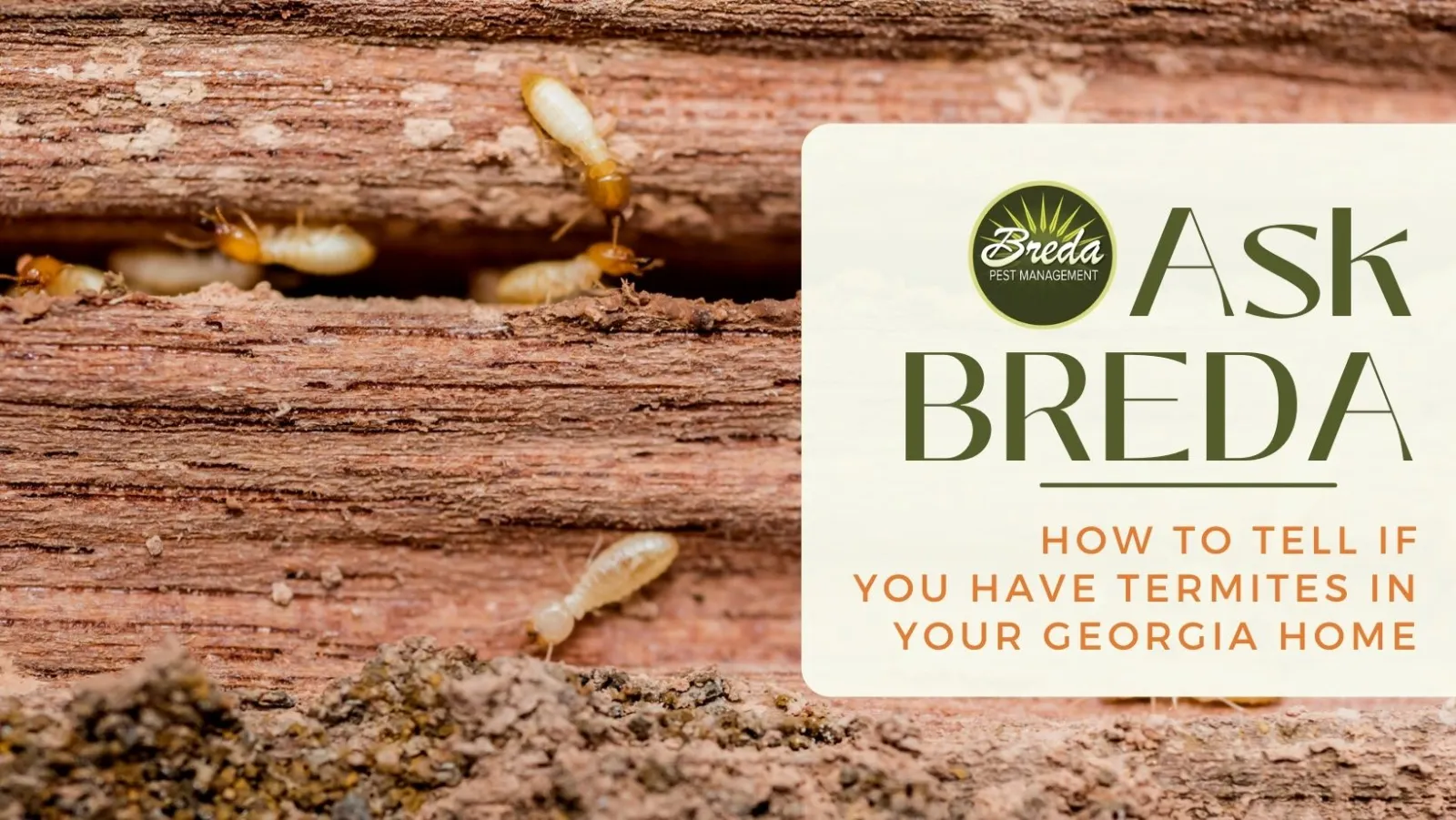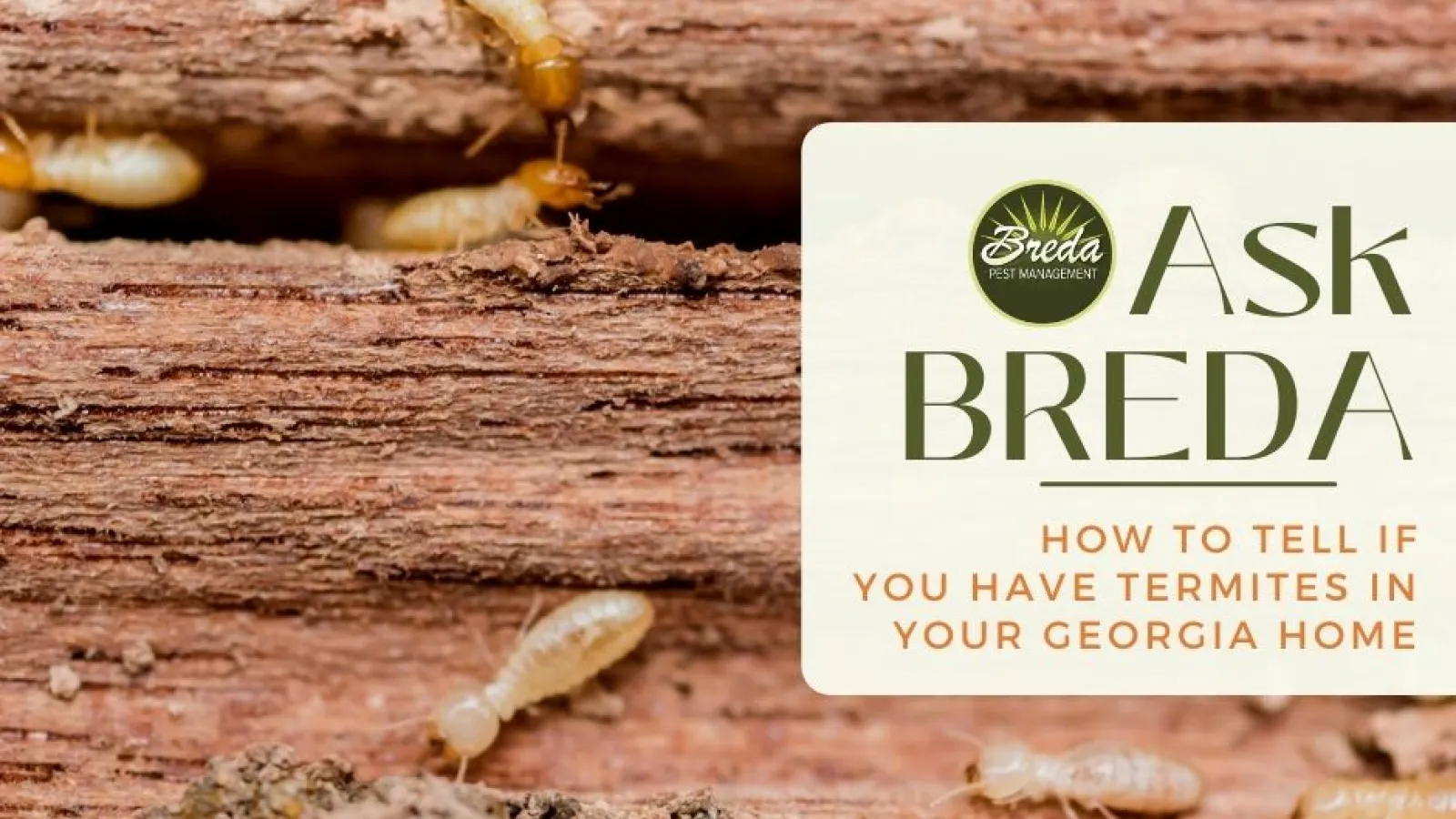
Learn if your home is at risk of termite infestation
We love providing Metro Atlanta homeowners with superior pest control service and top-notch information on how to combat common insects and critters in Georgia. But we also know that sometimes you just have a random question you'd love a quick answer for.
If you've got a pest question, reach out to us on Facebook and Instagram with your question and use the hashtag #AskBREDA. Then check back to the blog each month to see if we tackle your question!
This month, we received these questions:
Question: My house is four-sides brick. Does that mean I don't really have to worry about termites?
We get this question a lot and we always hate bursting a homeowner's bubble. Yes, even if your house is all brick on the outside, you likely still have plenty of enticing termite snack material on the inside. What makes termites unique is the fact that the worker termite (the one that actually eats wood) is completely blind. Worker termites blindly forage through the soil looking for anything wood to eat. The term we use in the industry to refer to "wood" is cellulose, since termite can eat anything made from paper. Cardboard boxes against the garage or basement wall—yep, termites will eat that. Firewood stacked on the floor against a wall—they'll eat that too. Worker termites will even devour the paper on the backside of batt insulation. Termites won't limit themselves to just your home's wood studs. Anything containing cellulose in your home is fair game.
To learn more about termites and the lifecycle of their colonies, you can read this free PDF guide from BREDA!
Question: What are some signs that I have termites in my home?
Termites are called "silent destroyers" for a reason. The hardest part about dealing with termites is knowing you have them. By the time you've figured out they're in your home, termites have usually eaten through your home's sheetrock (yes, termites eat the paper backing on sheetrock!). Other signs of termite presence are damage that looks like wood rot, mud tubes that run from the ground up into your home's exterior, and bubbling under your paint or wallpaper.
In the springtime, termites will "swarm" when the ground temperature reaches 70 degrees or warmer. Spotting a swarm is very helpful to you as a homeowner. Swarms mean you have a mature termite colony that is at least five years old, potentially with several thousand to several hundred thousand termites inside. While a bit terrifying to think about, this information is actually very helpful for your pest control technician!
Homeowners in the metro Atlanta area typically will have Eastern Subterranean termites in their soil. For every acre of land, there could be anywhere from six to thirty termite colonies occupying your soil. With one colony containing thousands of termites, you can quickly do the math and realize just how big of a threat termites are to any homeowner.
It's so important for Georgia homeowners to understand the type of termite coverage they have. Homeowners insurance does not cover termite damage. If you have purchased on-going termite protection for your home, you need to make sure "repair coverage" is included, in the event that termites do make it indoors and start their damaging feast.
Sadly, only 25% of homeowners in Georgia have on-going termite protection, and that's a number BREDA is committed to seeing increase! BREDA uses industry-leading technology to locate and eradicate termites from your property, and with BREDA's termite control guarantee, you never have to worry with termites and the extensive damage they cause ever again.
If you find yourself needing pest control and want it handled thoroughly, don't hesitate to give us a call. The BREDA Guarantee promises to fix your pest problem and keep it fixed—no matter the circumstances. Schedule a consultation online or give us a call at 770-466-6700.




